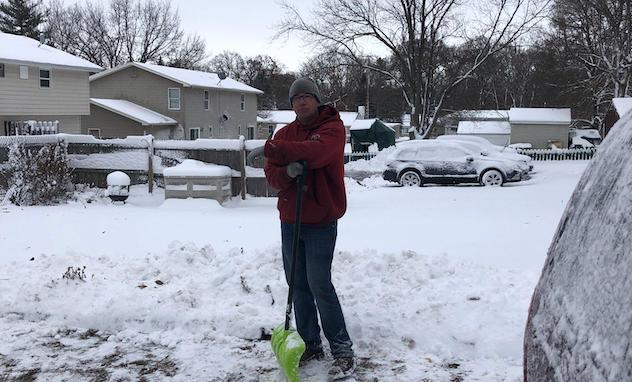Front Page
BLIZZARD
The snow came gently pounding down upon the Lake Geneva area starting around one o’clock in the afternoon on Sunday, November 25th. Lake Geneva communities around the lake received far more snow than any other communities affected by this storm. That these winter-tested and true people, living in the southern part of Wisconsin would handle the snow in such a disorganized and uncoordinated series of ways is both maddening and frustrating.
Lake Geneva, Town of Geneva, Williams Bay, Fontana, Walworth and Town of Linn.
Those are the six major/minor communities that are all close together around this nine-mile-long and three-mile-wide lake. Do these communities have a coordinated snow removal policy? They have coordinated fire and police, that’s for certain. What’s the reason for having no coordinated snow removal policy? Salt. Yes, that substance they put in the sand or loose sand alone to dissolve the ice that forms when the packed snow is driven on for a while. Plowing is only a part of it. Blowing snow is the biggest plowing problem, like the one following Sunday’s storm.
Each community uses a different mix of sand and salt. What is that mix? Nobody really knows since there are sparsely available reports in street department files, but actually, the guys and gals working for the different street departments mix it to their own recipes. Right now the lake water runs about 100 milligrams of Chloride, which is below the EPA level of 250 before harm is done to aquatic life, but that number keeps going up every year. At one time, Lake Geneva was salt-free, fearing for the quality of the water, but over time, when the other communities did not follow along with the salt-free policy, Lake Geneva went back to using salt. Currently, the mix is supposed to be 23 percent salt and the remainder water. But with no coordinated policy, with some teeth in it for violations, the communities can continue to put out there whatever they think is right, or maybe put less salt on the roads and sell it out the back door, as happened in Lake Geneva a few years back.
Lake Geneva gets an average of about 41 inches of snow per year. The national average is 26 inches. Twelve inches came down so it does not take a wizard to figure out that Lake Geneva has about 29 more inches coming before spring of next year. The record snowfall year was 68 inches. Incidentally, more than half the snow that falls in a winter season in Lake Geneva falls in December and January. This winter could be something else again when it comes to that lovely white stuff everyone loves or hates at different times.







Regarding front page Nov. 25…
Just saw a u tube video about salt contamination in wells in the Thousand Islands of NY which has caused corrosion of pipes releasing heavy metal compounds like lead. Testing done by Virginia Tech. Going to cost homeowners large assessments for years not to mention cost of damage to personal appliances etc…They want the government to pay because it was their actions which allowed the salt to contaminate the ground water. You should look into this around Lake Geneva…
Published on Oct 27, 2018
The Town of Orleans, New York, in the 1000 Island region, has been fighting New York State due to the contamination of the private wells. Studies show, due to improper storage of road salt at the NYSDOT Maintenance Complex on Route 12 off Route 81, in Collins Landing has caused Sodium Chloride to erode lead pipes and well parts, causing lead to seep into drinking water . This is a statewide issue, not just a Town of Orleans problem. The Town of Orleans is putting in municipal water, but at the cost of over 7 million dollars to the residents and businesses in the Town of Orleans. This documentary highlights the years-long battle between the residents and the state to fix the problem. Photo credit: Watertown Daily Times